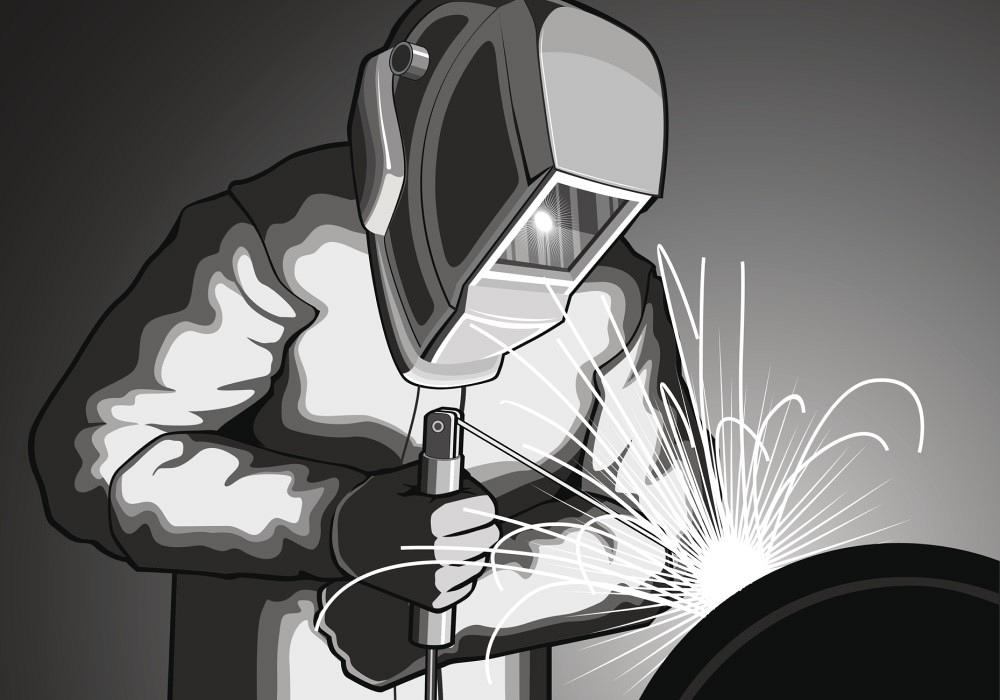Welding WPS Explained: Trick Elements and Conveniences for Your Welding Procedures
Welding WPS Explained: Trick Elements and Conveniences for Your Welding Procedures
Blog Article
Getting Welding Excellence: Unveiling the Keys of WPS Application and Optimization
In the realm of welding, achieving quality is a search that hinges on the careful application and optimization of Welding Treatment Specs (WPS) By delving right into the crucial elements, methods, obstacles, and best methods linked with WPS, a globe of welding excellence awaits those that are willing to explore its midsts.
Value of WPS in Welding
The Relevance of Welding Treatment Requirements (WPS) in the welding industry can not be overstated, acting as the backbone for ensuring uniformity, high quality, and safety and security in welding operations. A WPS offers thorough guidelines on exactly how welding is to be executed, including necessary variables such as products, welding processes, joint design, filler steels, interpass and preheat temperature levels, welding currents, voltages, traveling speeds, and much more. By sticking to a well-defined WPS, welders can keep harmony in their work, resulting in constant weld top quality throughout different jobs.

Trick Elements of WPS
Reviewing the integral parts of a welding treatment specification (WPS) is vital for understanding its duty in welding operations. An extensive WPS includes several key components that direct welders in attaining quality and uniformity in their work. One essential aspect of a WPS is the welding procedure requirements, which details the details welding procedures to be made use of, such as gas tungsten arc welding (GTAW) or protected steel arc welding (SMAW) Furthermore, the WPS includes information on the welding products, such as the kind and requirements of the base steel and filler metal to be used. The WPS likewise defines crucial variables like welding parameters, interpass and preheat temperature demands, and post-weld warmth treatment procedures. In addition, it consists of details on joint style, fit-up, and any type of special strategies or safety measures required for the welding operation. By incorporating these crucial elements right into the WPS, welding procedures can be standard, making certain quality, efficiency, and security in welding procedures.
Strategies for WPS Optimization

Secondly, training and credentials of welding personnel according to the certain requirements of the WPS is vital. Offering detailed training programs and guaranteeing that welders are accredited to execute treatments detailed in the WPS can cause greater high quality welds and lowered rework.
Furthermore, leveraging technology such as welding software application and tracking systems can help in maximizing WPS. These devices can help in tracking variables, ensuring i loved this specifications are within defined restrictions, and giving real-time feedback to welders, allowing them to make immediate changes for improved weld quality.
Common Difficulties and Solutions
Encountering barriers in applying the methods for WPS optimization can impede welding operations' effectiveness and top quality. One usual challenge is inadequate training or understanding of the welding treatment specs (WPS) among the welding team.
Another challenge is the absence of correct documents and record-keeping, which is crucial for WPS optimization. Without clear documents of welding criteria, products used, and examination results, it becomes difficult to determine areas for improvement and make sure consistency in welding procedures. Applying a durable paperwork system, such as digital welding monitoring software, can assist improve record-keeping and facilitate information evaluation for continuous renovation.
In addition, inconsistent welding devices calibration and maintenance can posture a considerable challenge to WPS optimization. Routine equipment checks, calibration, and maintenance routines should be stuck to strictly to ensure that welding specifications are accurately managed and preserved within the defined tolerances (welding WPS). By dealing with these usual challenges with aggressive remedies, welding operations can boost effectiveness, high quality, and overall welding quality
Ideal Practices for WPS Implementation
To ensure effective WPS execution in welding procedures, adherence to market requirements and thorough attention to detail are critical. When launching WPS implementation, it is important to begin by extensively understanding the particular welding demands of the task. This entails an extensive testimonial of the welding treatment specifications, products to be bonded, and the environmental problems in which the welding will certainly happen.
Once the requirements are clear, the following action is to choose the suitable welding treatment that aligns with these specs. This involves getting in touch with the relevant codes and standards, such as those provided by the American Welding Society (AWS) or the International Organization for Standardization (ISO), to make sure Check Out Your URL conformity and top quality.
Moreover, documenting the entire WPS implementation process is vital for traceability and high quality control. In-depth records ought to be kept relating to welding specifications, material preparation, interpass and preheat temperature levels, welding consumables utilized, and any type of inconsistencies from the initial procedure. Routine audits and evaluations of the WPS can help recognize locations for enhancement and make certain recurring optimization of the welding process.


Conclusion
Finally, the application and optimization of Welding Procedure Specs (WPS) is important for achieving welding quality. By understanding the crucial elements of WPS, implementing effective strategies for optimization, resolving common sites obstacles, and following ideal practices, welders can make sure top notch welds and safe working problems. It is essential for experts in the welding market to focus on the correct application of WPS to improve total welding efficiency and achieve wanted end results.
The Importance of Welding Treatment Specs (WPS) in the welding industry can not be overstated, serving as the foundation for ensuring consistency, high quality, and security in welding procedures. A WPS gives in-depth directions on exactly how welding is to be brought out, including important variables such as products, welding procedures, joint style, filler steels, preheat and interpass temperatures, welding currents, voltages, travel rates, and much more. One vital element of a WPS is the welding process specification, which lays out the details welding procedures to be made use of, such as gas tungsten arc welding (GTAW) or secured steel arc welding (SMAW) By incorporating these essential aspects into the WPS, welding treatments can be standard, making certain quality, efficiency, and safety in welding operations.
It is crucial for professionals in the welding sector to focus on the proper execution of WPS to enhance total welding efficiency and accomplish desired outcomes.
Report this page